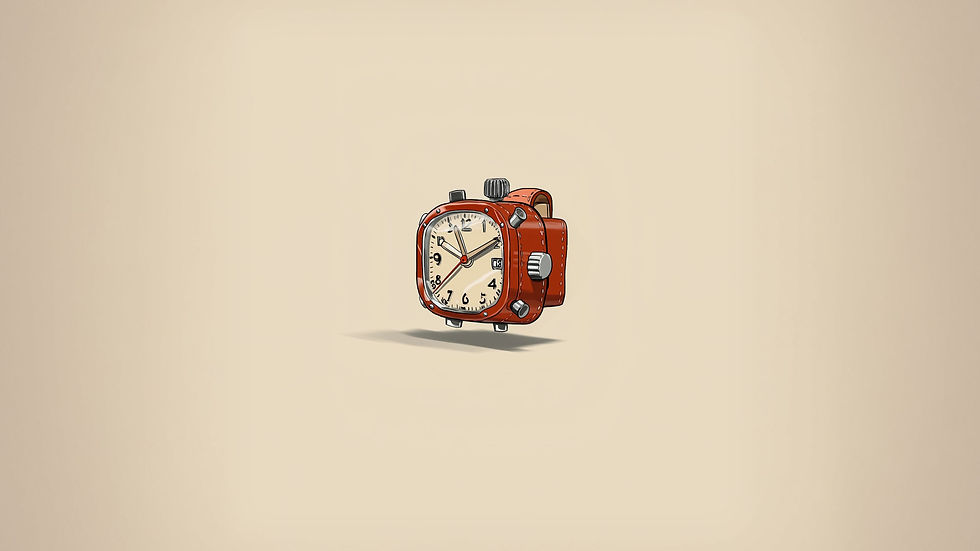Understanding the Role of UX in Everyday Digital Experiences
- Prabhash Kumar
- Aug 11, 2024
- 4 min read
Updated: Sep 25, 2024

In today's digital age, we interact with a variety of products and services on a daily basis—whether it's browsing a website, using a mobile app, or navigating through an online shopping platform. But have you ever wondered why some digital experiences feel smooth and intuitive while others leave you frustrated and confused? The answer lies in UX, or User Experience design.
What is UX Design?
UX design is the process of creating products that provide meaningful and relevant experiences to users. This involves the design of the entire process of acquiring and integrating the product, including aspects of branding, design, usability, and function. It's about ensuring that the user’s journey through the product is as easy and enjoyable as possible.
Imagine walking into a grocery store. If the store layout is intuitive, the aisles are well-organized, and the items you need are easy to find, your shopping experience is pleasant. You might not even notice the design—everything just works. However, if the store is cluttered, the aisles are confusing, and you can't find what you're looking for, you'll quickly become frustrated. This is exactly how UX design works in the digital world: when it’s done well, it’s nearly invisible, but when it’s done poorly, it stands out.
The Purpose of UX Design
The primary purpose of UX design is to create a product that not only solves the user’s problem but also does so in a way that is efficient, effective, and enjoyable. It’s not just about how a product looks (that’s UI design, or User Interface design); it’s about how it works.
Good UX design involves:
Understanding User Needs: By conducting user research, designers can understand what users need, what their pain points are, and how the product can solve those problems.
Creating a Seamless Flow: From the moment a user interacts with the product, they should feel guided and supported. Whether they’re signing up for a service, purchasing a product, or simply browsing, the experience should be smooth and intuitive.
Ensuring Accessibility: UX design ensures that products are accessible to all users, including those with disabilities. This involves considering things like color contrast, font size, and alternative text for images.
Why Good UX Design Matters
To understand the importance of good UX design, let’s compare it to a real-life scenario. Imagine you’re driving a car. If the controls are easy to understand, the dashboard is clear, and the car responds predictably, driving is a breeze. But if the controls are confusing, the dashboard is cluttered with unnecessary information, and the car responds unpredictably, driving becomes stressful and dangerous.
Similarly, in the digital world, good UX design ensures that users can navigate a product easily, find the information they need, and complete their tasks without frustration. It’s about creating a digital environment that feels natural and intuitive.
Key Elements of UX Design
To build a successful UX design, several key elements must be considered:
Accessibility: Design should be inclusive, catering to people with different abilities. This involves considering visual, auditory, and cognitive accessibility.
Usability: A product must be easy to use. This includes intuitive navigation, clear instructions, and a logical flow of actions.
Functionality: The product must work as intended. It should be reliable, with no bugs or errors that disrupt the user’s experience.
Information Architecture: This is about organizing content in a way that makes it easy for users to find what they’re looking for. Clear labels, well-structured menus, and a logical flow of information are key.
Interaction Design: This involves designing the way users interact with the product, including buttons, controls, and other interactive elements. The goal is to make these interactions as smooth and intuitive as possible.
Visual Design: While UX is primarily about function, visual design plays a supporting role. A clean, aesthetically pleasing interface can enhance the user experience by making the product more enjoyable to use.
Building a UX Design System
Creating a consistent UX design across all your products requires a well-defined design system. A design system is a set of guidelines that includes typography, color schemes, components, and spacing, among other things. This ensures that all products under your brand provide a consistent user experience.
Typography: Choose fonts that are easy to read and reflect your brand's personality.
Color Schemes: Define a palette that represents your brand and ensures readability.
Components: Standardize elements like buttons, forms, and navigation bars to create a cohesive experience.
Spacing and Layouts: Consistent spacing and layouts make the interface clean and easy to navigate.
Conclusion
UX design is not just about creating beautiful products; it's about crafting experiences that are intuitive, efficient, and enjoyable for the user. Whether you’re designing a mobile app, a website, or any other digital product, focusing on UX can make the difference between a product that users love and one that they abandon.
Remember, good UX design is often invisible—it’s felt in the ease and satisfaction users experience when interacting with your product. By understanding and implementing the core principles of UX design, you can create products that not only meet users’ needs but also provide them with a delightful experience.

Comments